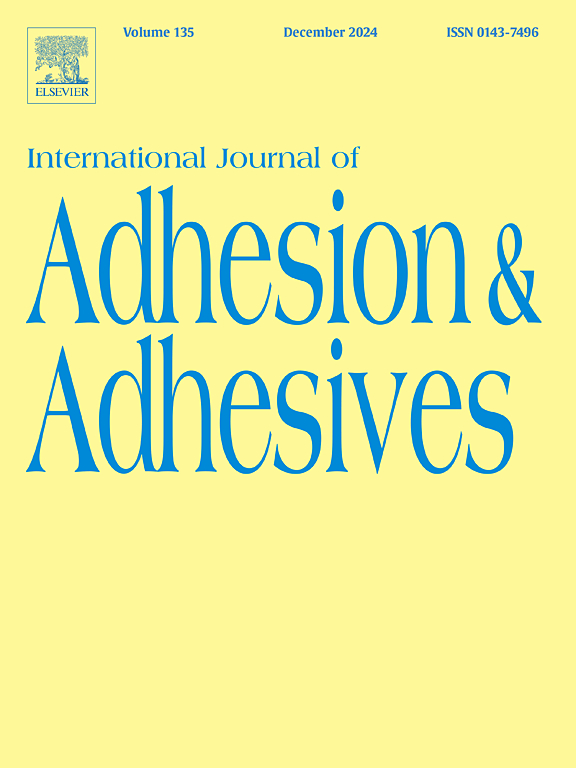An analytical procedure for failure and stiffness prediction of glued-in rod timber connections
IF 3.2
3区 材料科学
Q2 ENGINEERING, CHEMICAL
International Journal of Adhesion and Adhesives
Pub Date : 2025-02-25
DOI:10.1016/j.ijadhadh.2025.103992
引用次数: 0
Abstract
Glued-in rod (GiR) timber joints, featuring a composition of a rod, adhesive (glue), and timber, play a pivotal role within the mass timber construction industry where the performance of the GiR connections is imperative for the success of massive timber-based structural systems. However, the intricate mechanical complexities inherent in the load-displacement behaviour of the timber/adhesive joints present significant challenges in the accurate analysis and design of the GiR connections. This article endeavours to use the theory of elasticity and fracture mechanics to derive an analytical procedure for assessing the stiffness and loading capacity of the single GiR joints subjected to pull-pull, pull-push, rod-pull, and wood-pull loading configurations. In the proposed analytical model, the adherents are treated as isotropic, orthotropic, or multilayer composite materials. Given the intricate anisotropic nature of the timber and the composition of the GiR connections, a judicious combination of failure criteria inspired by continuum damage mechanics or fracture mechanics is adopted, to effectively capture the peak load associated with a wide range of failure modes. The accuracy of the proposed analytical model is evaluated through comparison with the laboratory test data, Volkersen's theory, and EN1995-1-1 models, providing insights for efficient analysis and design of timber connections with GiR.
粘接杆材连接失效及刚度预测的分析方法
粘接杆(GiR)木材接头,由棒、粘合剂(胶水)和木材组成,在大型木结构行业中发挥着关键作用,其中GiR连接的性能对于大型木基结构系统的成功至关重要。然而,木材/胶粘剂接头的载荷-位移特性所固有的复杂机械复杂性,为精确分析和设计GiR连接提出了重大挑战。本文试图利用弹性和断裂力学理论推导出一种分析程序,用于评估受拉-拉、拉-推、杆-拉和木-拉加载配置的单个GiR节点的刚度和承载能力。在提出的分析模型中,附着物被视为各向同性、正交异性或多层复合材料。考虑到木材错综复杂的各向异性性质和GiR连接的组成,采用了由连续损伤力学或断裂力学启发的破坏准则的明智组合,以有效地捕获与各种破坏模式相关的峰值载荷。通过与实验室测试数据、Volkersen理论和EN1995-1-1模型的比较,对所提出的分析模型的准确性进行了评估,为使用GiR的木材连接的有效分析和设计提供了见解。
本文章由计算机程序翻译,如有差异,请以英文原文为准。
求助全文
约1分钟内获得全文
求助全文
来源期刊

International Journal of Adhesion and Adhesives
工程技术-材料科学:综合
CiteScore
6.90
自引率
8.80%
发文量
200
审稿时长
8.3 months
期刊介绍:
The International Journal of Adhesion and Adhesives draws together the many aspects of the science and technology of adhesive materials, from fundamental research and development work to industrial applications. Subject areas covered include: interfacial interactions, surface chemistry, methods of testing, accumulation of test data on physical and mechanical properties, environmental effects, new adhesive materials, sealants, design of bonded joints, and manufacturing technology.
 求助内容:
求助内容: 应助结果提醒方式:
应助结果提醒方式:


